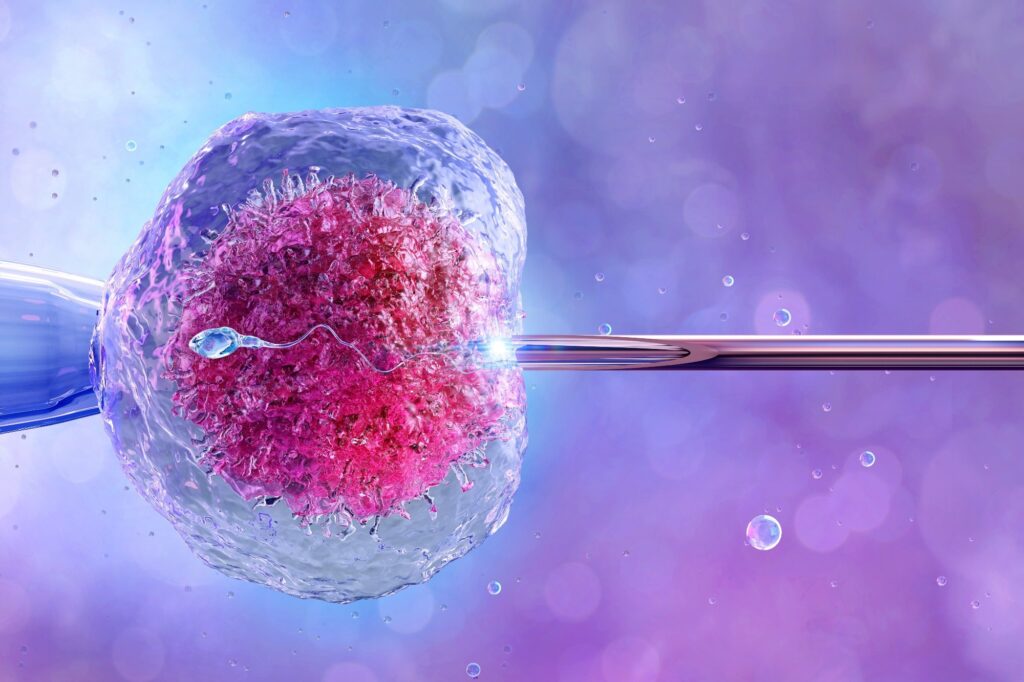
In a recent study published in the journal Frontiers in endocrinology, Researchers examined how lifestyle factors and fertility-specific quality of life (QoL) influence outcomes of assisted reproductive technology (ART) treatments.

Background
Infertility affects around 48.5 million couples worldwide, leading to an increase in ART treatments, with between 2.5 and 3 million cycles a year and almost 450,000 in Japan alone. Given that 1 in 13.9 Japanese babies are born using ART, factors such as age, ovarian reserve, and lifestyle (including diet, smoking, exercise, and sleep) are recognized as influencing the success of the procedure. treatment. The World Health Organization (WHO) highlights the need to assess quality of life, including fertility-specific quality of life, using tools such as the Fertility Quality of Life (FertiQoL) tool. However, the relationship between fertility-specific quality of life and ART outcomes requires further research to better understand their complex interactions.
About the study
The present study focused on infertile couples undergoing their first in vitro fertilization (IVF) treatment in Japan, selecting participants based on specific demographic and health criteria. At first, participants detailed their dietary habits, inspired by the Mediterranean diet but adapted to Japanese preferences, and their lifestyle choices, including sleep patterns, work habits, computer use, smoking, and physical activity, measured by metabolic equivalent tasks (MET). . Additionally, fertility-specific quality of life was assessed using the Japanese version of the FertiQoL questionnaire, exploring its influence on treatment outcomes.
The study described protocols for controlled ovarian stimulation, laboratory procedures, and embryo transfer (ET), including drug doses and administration schedules based on individual patient profiles. Selection of good quality blastocysts for transfer was based on Gardner’s classification, requiring a washout period between stimulation and ET. IVF/Intracytoplasmic Sperm Injection (ICSI) results were accurately recorded, from hormone levels to fertilization rates, embryonic development and confirmation of pregnancy by serum human chorionic gonadotropin (hCG) testing and transvaginal ultrasound for detection of the gestational sac (GS).
Statistical analysis aimed to explore the relationship between patient history, dietary and exercise habits, FertiQoL scores and IVF outcomes, using a multivariate approach to identify significant factors. The study attempted to recruit 286 patients to detect a clinically relevant difference in the primary outcome, the rate of good quality blastocysts, with comprehensive statistical analysis performed using SAS software.
Study results
Between May 2019 and March 2022, 291 women seeking their first IVF treatment at IVF Japan Group clinics and the University of Tokyo Hospital were initially considered for the study. After excluding those who discontinued treatment, became spontaneously pregnant, or met exclusion criteria, 281 women proceeded with controlled ovarian stimulation and oocyte retrieval. Various reasons, including lack of fertilization, absence of good quality embryos, and loss to follow-up, further reduced the number of participants to 260 who underwent ET, and 200 underwent single blastocyst embryo transfers (blast -SET). Of them, 139 women showed positive hCG levels, indicating pregnancy, and in 121 women, a single GS was detected without cases of multiple GS.
The study examined the rate of good-quality blastocysts per oocyte retrieval, revealing that women over 36 years of age or those with Hashimoto’s disease had significantly lower rates, while frequent fish consumption was also tentatively linked to higher rates. low. Analysis of all ET cycles showed that older women were less likely to have a positive pregnancy test. In contrast, getting enough sleep, using computers, and having non-smoking partners were associated with higher odds. GS detection after ET was more likely with olive oil use, longer computer use, and a body mass index (BMI) of 20.8 kg/m2 or more, and advanced age decreases the probability.
Focusing explicitly on blast-SET cycles, computer use for four or more hours a day significantly improved the chances of a positive pregnancy test and GS detection. Older age tended to decrease the likelihood of a positive pregnancy test, while a higher FertiQoL Total scaled treatment score and a certain BMI threshold appeared to favor GS detection, however, with a trend toward significance instead. of definitive proof.
Conclusions
In summary, the study explored the effects of lifestyle, dietary habits, and fertility-specific quality of life on ART outcomes among East Asian women. Key findings include the negative impacts of advancing age and Hashimoto’s disease on blastocyst quality and positive associations between adequate sleep, computer use, and pregnancy success. Olive oil consumption was beneficial for gestational sac detection, challenging assumptions about the impacts of diet on fertility. In particular, male smoking negatively affected the results, highlighting the importance of lifestyle factors in reproductive success.